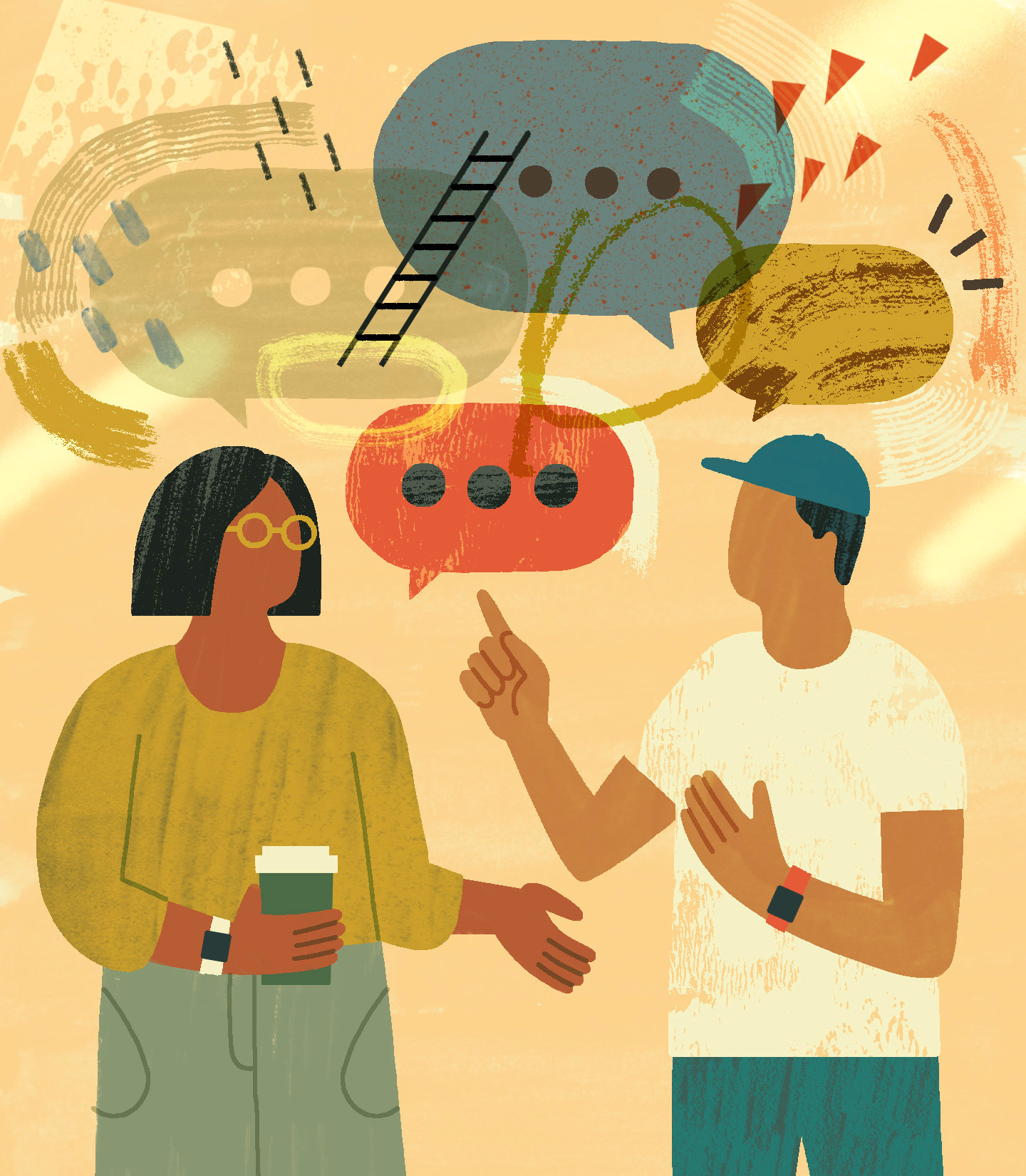Here are ways to connect with people if you disagree
Professor Katrina Lee shares award-winning civil discourse tactics devised by law students to help foster a productive discussion on a tough topic.

With a presidential election looming and important issues stirring people’s passions, it can seem like there are more reasons to disagree than to agree. But figuring out how to talk with—and not yell past—each other is critical, both in our personal lives and for our society.
“There are hard problems out there to be solved, so practicing civil discourse skills would be really helpful,” says Katrina Lee, director of Moritz College of Law’s Program on Dispute Resolution.
Ranked No. 1 by U.S. News & World Report, the program helped launch courses explaining the whys and hows of civil discourse, the practice of discussing issues in a way that promotes understanding and develops mutual respect. No matter your profession, the lessons can lead to better relationships with people you care about.
Lee, the John C. Elam/Vorys Sater Professor in Law, recommends three practices:
- Try to listen deeply, to build trust.
- Aim to connect on a human level, perhaps by asking how a person is doing.
- Broaden your understanding by being curious outside of your own areas of expertise.
“The world moves so quickly,” Lee says. “To foster civil discourse, we have to develop healthy practices.”
In no surprise for a professor honored with an Alumni Award for Distinguished Teaching, Lee next suggests a student-produced strategy, “Initiating Constructive Conversations Among Polarized University Student Groups.” Created by Maxwell Herath ’23 JD, Julie Howard ’23 JD, Konner Kelly ’15, ’23 MCRP and Meara Maccabee ’23 JD, in partnership with the Divided Community Project (housed in the Program on Dispute Resolution), the guide won a national award for practical and innovative thinking. Four takeaways:
Acknowledge bias beforehand
One of the first steps the guide recommends is recognizing our own biases, which makes it easier to leave them at the door. If you’re planning to talk with someone about a topic you disagree on, start by acknowledging your biases.
Set expectations and develop trust
When people feel respected, they’re more likely to invest themselves and be open to other viewpoints. So when you invite the sit-down, be specific about what you’d like to discuss and why: to create better understanding. Then stick to the plan.
Consider the space
Where you talk is almost as important as the conversation itself, and neutrality is the goal. Meet in a welcoming location that no participant owns or is more accustomed to. That way, you avoid subconsciously indicating who has the home-field advantage or the right opinions.
Promote storytelling
Sharing stories can help us see each other on a more human level and find shared values, building trust. So if you have experiences that helped you form your opinion, reveal them. Ask the other person to do the same and aim for honesty and openness.
Helping polarized groups talk
The guide in this story was created for leaders who want to bring together student groups to build understanding. It’s 26 pages of practical ideas for how to make this kind of effort successful, advice that can be applied for many different groups.



